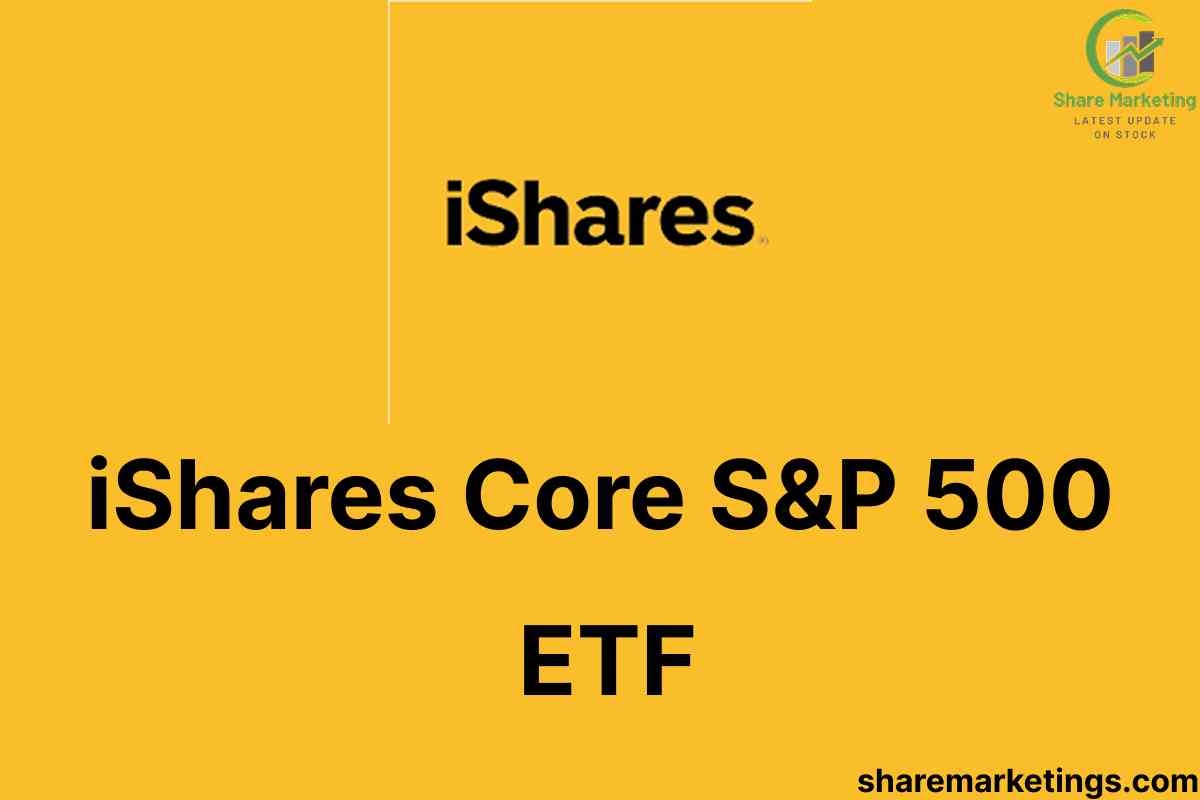iShares Core S&P 500 ETF (IVV) एक प्रमुख एक्सचेंज-ट्रेडेड फंड (ETF) है जो अमेरिकी शेयर बाजार के 500 सबसे बड़े सार्वजनिक कंपनियों के प्रदर्शन को ट्रैक करता है। यह ETF निवेशकों को विविधता, कम लागत और स्थिर रिटर्न प्रदान करता है।
फंड की प्रमुख जानकारी (Key Details)
- टिकर (Ticker): IVV
- लॉन्च तारीख (Launch Date): 15 मई, 2000
- प्रबंधक (Manager): BlackRock
- नेट एसेट्स (AUM) (Net Assets (AUM)): $685.7 बिलियन (30 जून 2025 तक)
- व्यय अनुपात (Expense Ratio) (Expense Ratio): 0.03%
- डिविडेंड यील्ड (Dividend Yield): 1.16% (30 दिन की SEC यील्ड)
- डिविडेंड भुगतान आवृत्ति (Dividend Payment Frequency): त्रैमासिक (Quarterly)
- बाजार (Market): NYSE Arca
टॉप होल्डिंग्स (Top Holdings)
| कंपनी नाम | आवंटन (%) |
|---|---|
| NVIDIA Corp | 7.32% |
| Microsoft Corp | 7.03% |
| Apple Inc | 5.82% |
| Amazon.com Inc | 3.94% |
| Meta Platforms Inc (Class A) | 3.05% |
| Broadcom Inc | 2.46% |
| Alphabet Inc (Class A) | 1.95% |
| Berkshire Hathaway Inc (Class B) | 1.69% |
| Tesla Inc | 1.69% |
| Alphabet Inc (Class C) | 1.58% |
निवेशक के लिए उपयुक्तता
किसे निवेश करना चाहिए:
- जो अमेरिकी शेयर बाजार में दीर्घकालिक निवेश की तलाश में हैं।
- कम लागत वाले, विविधतापूर्ण और स्थिर रिटर्न वाले निवेश विकल्प चाहते हैं।
- जो S&P 500 इंडेक्स के प्रदर्शन को ट्रैक करना चाहते हैं।
निवेश से पहले ध्यान देने योग्य बातें:
- IVV अमेरिकी शेयर बाजार में निवेश करता है, इसलिए अमेरिकी अर्थव्यवस्था की स्थिति और डॉलर की विनिमय दर भारतीय निवेशकों के लिए महत्वपूर्ण हो सकती है।
- डिविडेंड भुगतान त्रैमासिक होते हैं, जो नियमित आय की तलाश करने वाले निवेशकों के लिए उपयुक्त है।
iShares Core S&P 500 ETF Returns
नीचे iShares Core S&P 500 ETF (IVV) के रिटर्न की जानकारी प्रस्तुत की गई है:
iShares Core S&P 500 ETF (IVV) के रिटर्न
| समयावधि | रिटर्न (%) |
|---|---|
| 1 वर्ष (2024–2025) | 15.13% |
| 3 वर्ष (2022–2025) | 19.68% |
| 5 वर्ष (2020–2025) | 16.60% |
| 10 वर्ष (2015–2025) | 13.61% |
| स्थापना से अब तक | 7.89% |
कुल रिटर्न (Total Return)
कुल Return में Dividends का Reinvestment शामिल होता है। अक्टूबर 2025 तक के Numbers इस प्रकार हैं:
- 1 वर्ष रिटर्न: 14.92%
- 3 वर्ष वार्षिक रिटर्न (CAGR): 24.36%
- 5 वर्ष वार्षिक रिटर्न (CAGR): 15.87%
- 10 वर्ष वार्षिक रिटर्न (CAGR): 14.71%
- स्थापना से अब तक कुल रिटर्न: 651.64%

iShares Core S&P 500 ETF (IVV) की ताकतें (Strengths)
1) S&P 500 इंडेक्स का ट्रैकिंग
- यह ETF अमेरिकी शेयर बाजार की 500 सबसे बड़ी कंपनियों का प्रतिनिधित्व करता है।
- निवेशकों को अमेरिकी अर्थव्यवस्था के प्रमुख क्षेत्रों में विविधता (Diversification) मिलती है।
2) कम खर्च अनुपात (Low Expense Ratio)
- व्यय अनुपात केवल 0.03% है, जो इसे अन्य समान ETFs की तुलना में बहुत सस्ता बनाता है।
3) लिक्विडिटी (Liquidity)
- इसे स्टॉक की तरह कभी भी खरीदा या बेचा जा सकता है, जिससे निवेशकों को अपने निवेश पर नियंत्रण मिलता है।
4) दिर्घकालिक स्थिरता (Long-Term Stability)
- S&P 500 इंडेक्स समय के साथ बढ़ता है, जिससे लंबी अवधि में अच्छा रिटर्न मिलता है।
5) विश्वसनीय फंड हाउस
- इसे BlackRock द्वारा मैनेज किया जाता है, जो विश्व का सबसे बड़ा और भरोसेमंद निवेश प्रबंधक है।
iShares Core S&P 500 ETF (IVV) के जोखिम (Risks)
1) मार्केट जोखिम (Market Risk)
- ETF का प्रदर्शन सीधे अमेरिकी शेयर बाजार पर निर्भर करता है।
- अमेरिकी अर्थव्यवस्था की मंदी या वैश्विक आर्थिक घटनाएँ ETF को प्रभावित कर सकती हैं।
2) शॉर्ट-टर्म उतार-चढ़ाव (Short-Term Volatility)
- कभी-कभी अमेरिकी शेयर बाजार में तेज़ी या गिरावट आ सकती है।
- शॉर्ट-टर्म निवेशकों को नुकसान हो सकता है।
3) मुद्रा जोखिम (Currency Risk)
- भारतीय निवेशकों के लिए USD/INR विनिमय दर का उतार-चढ़ाव भी रिटर्न पर असर डाल सकता है।
4) डिविडेंड जोखिम (Dividend Risk)
- ETF डिविडेंड त्रैमासिक भुगतान करता है, लेकिन डिविडेंड में उतार-चढ़ाव हो सकता है।
Final Verdict (अंतिम निष्कर्ष)
iShares Core S&P 500 ETF (IVV) उन निवेशकों के लिए एक सशक्त और भरोसेमंद विकल्प है जो अमेरिकी शेयर बाजार में दीर्घकालिक निवेश करना चाहते हैं।
यह ETF S&P 500 इंडेक्स को ट्रैक करता है, यानी आपको अमेरिकी बाजार की 500 सबसे बड़ी और स्थिर कंपनियों में विविधता (Diversification) के साथ निवेश का अवसर मिलता है।
क्यों IVV चुनें:
- कम खर्च (Low Expense Ratio): केवल 0.03%
- विविधता (Diversification): अमेरिकी बाजार के प्रमुख क्षेत्रों में निवेश
- लिक्विडिटी (Liquidity): शेयर की तरह आसानी से खरीदा और बेचा जा सकता है
- विश्वसनीयता (Reliability): इसे BlackRock जैसे भरोसेमंद फंड हाउस द्वारा मैनेज किया जाता है
- लंबी अवधि में स्थिर रिटर्न (Long-Term Growth): S&P 500 इंडेक्स की तरह अच्छा रिटर्न देने की संभावना
ध्यान देने योग्य बातें:
- मार्केट उतार-चढ़ाव: शॉर्ट-टर्म में मूल्य में गिरावट हो सकती है
- मुद्रा जोखिम: भारतीय निवेशकों के लिए USD/INR दर में उतार-चढ़ाव का असर
- डिविडेंड में अस्थिरता: डिविडेंड त्रैमासिक होता है, लेकिन बदल सकता है
Motilal Oswal Nasdaq 100 ETF: A Complete Guide for 2025
Aditya Birla Sun Life Gold ETF: The Ultimate Guide to Investing in Gold
ICICI Prudential Nifty 100 ETF: A Complete Guide to Beginners
Disclaimer: The content on this website is intended for informational purposes only and should not be interpreted as financial or investment advice. Engaging in stock market activities involves inherent risks, and outcomes can be unpredictable. While we strive to provide accurate and up-to-date information, we do not make any guarantees regarding the completeness or reliability of the content. Any investment decisions you make should be based on your own research and consultation with a qualified financial professional. We are not responsible for any financial gains or losses resulting from actions taken based on the information provided here. Always invest wisely and at your own risk.



